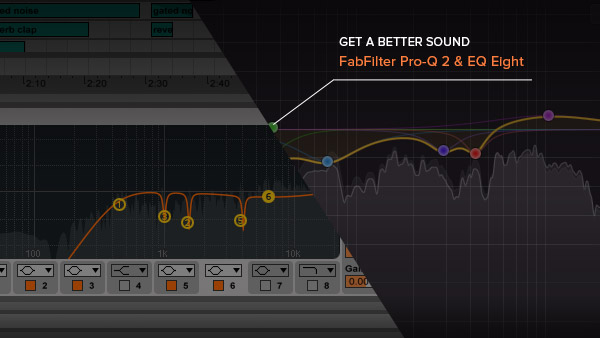
In unlocked (non-tempo-sync) mode, the delay time can vary over an enormous range of 10ms to 5 seconds. This works a little like rhythm grooves where setting the delay time a little shorter than usual gives an urgent rushed feel, and setting the delay time a little longer than usual gives a more laid-back relaxed feel. This means you could set the delay time to be just a touch short or a touch long of a musical time value. The real clever part is that the knob can also be finely adjusted outside of those preset values. Unfortunately, these points are only labeled with little circles, not values, making it a bit of a guessing game until you get used to it. This way you can set up dotted and triplet times. There are also places to click around the knob to quickly set it to exactly 50%, 66%, 75%, 133%, 150%, and 200%. For example, if you set the tempo-sync to a quaver (or eighth-note), the half-way mark on the delay time knob becomes that exact length. This can seem a little odd at first, and can take a little getting used to. Rather than restricting the available time divisions, switching to tempo-sync mode actually changes the scale of the delay time knob. The way tempo-sync is done is particularly clever. While each delay line can have its time set independently, there’s also a “lock” option that allows both times to be set by one knob – handy when all you want is a straight delay without any widening effects. There’s even a “tap tempo” control where you can set the delay time by tapping the mouse in time with the music (which is great for an “almost-synced” delay time with a bit of vibe… providing you can tap in time!). They have all the usual time divisions (including dotted notes and triplets), and an “unlocked” mode where you can specify the delay time with accuracy to a tenth of a millisecond. The delay lines have all the features you’d expect.

The delay section is based on two delay lines, one for each side of a stereo track. But as you read further, you’ll see that these aren’t your ordinary delay lines, they’re not your ordinary filters, and this is not even close to your ordinary routing and modulation. At it’s core, Timeless is based on two delay lines being fed into two filters. This is a delay designer, and it can do things you’d never expect from a delay plugin (and some things you’d never expect from any regular plugin). This is not your average delay with only a handful of different sounds. If it wasn’t already obvious, Timeless is a deep plugin. What do all these controls do? Does a delay really need 32 knobs? And can it still do simple echo? Read on… Four feedback knobs (that’s a LOT of feedback!), that tape/stretch switch (do we get to stretch the tape?), yellow rings around some of the larger knobs, and what looks like a synth envelope tucked in the bottom right (with separate knobs for attack, decay, sustain and release). But some strange controls might not be immediately obvious.

After poking around a bit you might start to recognize some familiar controls such as delay time, wet/dry levels, filter frequencies, etc.

Timeless has 32 knobs (plus assorted other controls) tightly packed into the plugin window.

Or are you the kind of person who wants to use your delay plugin to make noises that no delay plugin ever should? How much control over a delay plugin do you need? Delay time, feedback, mix level? Maybe a couple more knobs for tone? Or maybe you’re the kind of person who wants a bit more control – perhaps you want to do ping pong delays or even a bit of modulation?


 0 kommentar(er)
0 kommentar(er)
